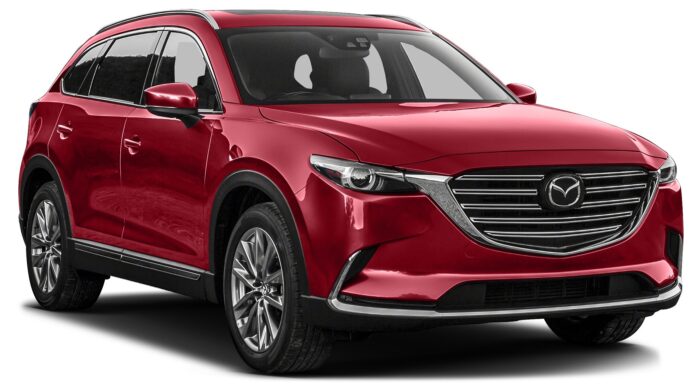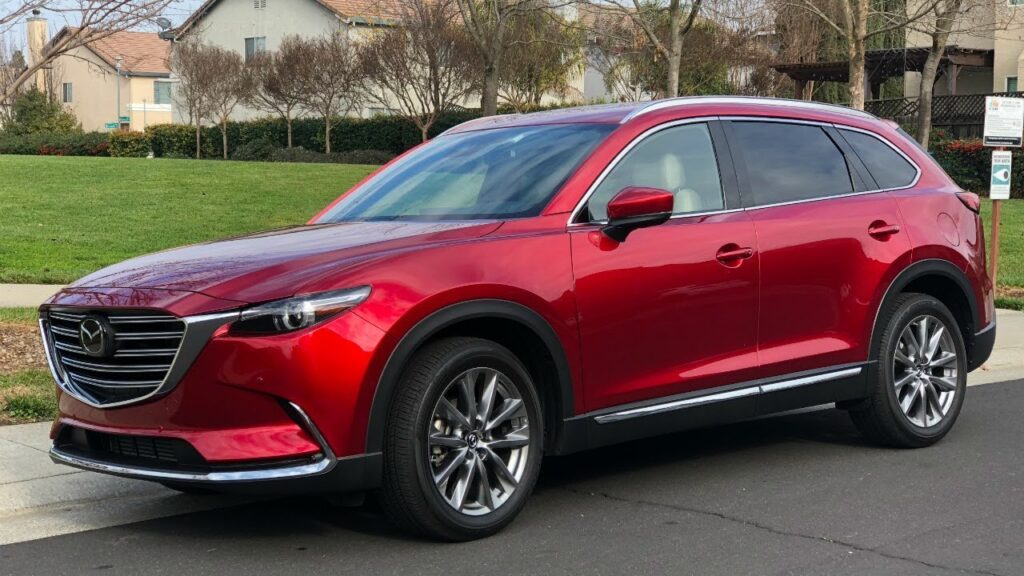Few SUVs have made as big of an impression as the Mazda CX-9. Known for its sleek design, robust performance, and reliability, this vehicle has taken the automobile world by storm. This comprehensive guide will explore the various generations, trims, and engines available in the Mazda CX-9 lineup, culminating in a vital guide to tire pressures and a quick tutorial on resetting the low tire pressure light. Ready? Let’s zoom through!
A Snapshot: Mazda CX-9 Generations
| Generation | Years | Notable Features |
|---|---|---|
| First | 2006-2015 | Introduced the CX-9 to the world; powerful V6 engine |
| Second | 2016-Present | SkyActiv technology; more streamlined design |
Dive Deep: Trims & Engines
First Generation (2006-2015)
- Sport
- Engine: 3.7L V6
- Key Features: 18-inch wheels, cruise control, power accessories.
- Touring
- Engine: 3.7L V6
- Key Features: Leather upholstery, heated front seats, keyless entry.
- Grand Touring
- Engine: 3.7L V6
- Key Features: 20-inch wheels, navigation system, premium audio.
Second Generation (2016-Present)
- Sport
- Engine: 2.5L Turbo 4-cylinder
- Key Features: 18-inch wheels, Mazda Connect infotainment, rearview camera.
- Touring
- Engine: 2.5L Turbo 4-cylinder
- Key Features: Leather seats, advanced safety features, premium sound.
- Grand Touring
- Engine: 2.5L Turbo 4-cylinder
- Key Features: 20-inch wheels, head-up display, moonroof.

Perfect Pressure: Recommended Tire Pressures for Different Trims
| Generation & Trim | Front Tires (PSI) | Rear Tires (PSI) |
|---|---|---|
| First Gen – Sport | 32 | 32 |
| First Gen – Touring | 33 | 33 |
| First Gen – Grand Touring | 33 | 33 |
| Second Gen – Sport | 34 | 34 |
| Second Gen – Touring | 34 | 34 |
| Second Gen – Grand Touring | 35 | 35 |
Note: Always refer to the vehicle’s manual or door jamb sticker for specific tire pressure recommendations.
Mazda CX-9 Tire Pressure Table by Year
| Year | Summer Tires (PSI) | Winter Tires (PSI) |
|---|---|---|
| 2007 | 34 | 36 |
| 2008 | 34 | 36 |
| 2009 | 34 | 36 |
| 2010 | 34 | 36 |
| 2011 | 34 | 36 |
| 2012 | 34 | 36 |
| 2013 | 34 | 36 |
| 2014 | 34 | 36 |
| 2015 | 34 | 36 |
| 2016 | 34 | 36 |
| 2017 | 34 | 36 |
| 2018 | 34 | 36 |
| 2019 | 34 | 36 |
| 2020 | 34 | 36 |
| 2021 | 34 | 36 |
| 2012 | 34 | 36 |
| 2023 | 34 | 36 |
| 2024 | 34 | 36 |
The above table provides general guidelines. Always check the vehicle’s manual or consult Mazda’s official resources for the most accurate information.
Why is Tire Pressure Important?
- Safety: Proper tire pressure ensures that the vehicle has maximum traction on the road, reducing the risk of accidents.
- Fuel Efficiency: Over or under-inflated tires can decrease your gas mileage.
- Tire Longevity: Maintaining the right pressure can significantly prolong the lifespan of your tires.
- Performance: A car performs at its best when its tires are kept at the recommended pressure.
Tips for Checking and Maintaining Tire Pressure
- Regular Checks: It’s best to check your tire pressure at least once a month and before long trips.
- Morning Checks: For the most accurate reading, check the tire pressure when they are cold, preferably in the early morning.
- Use a Quality Gauge: Always use a reliable tire pressure gauge.
- Don’t Forget the Spare: Even if you don’t use it often, make sure your spare tire is also properly inflated.
Quick Tips: How to Reset Low Tire Pressure Light on Mazda CX-9?
- Check All Tires: Before resetting, ensure that all tires are inflated to the recommended pressure.
- Ignition On: Turn the ignition switch to the “ON” position, but don’t start the engine.
- Locate the Reset Button: Typically found on the left side of the steering wheel or within the infotainment settings.
- Press & Hold: Press and hold the tire pressure reset button until the warning light blinks twice and then release.
- Drive for a Bit: Once reset, drive your Mazda CX-9 for at least 10 minutes. This allows the system to recalibrate and detect the correct tire pressure.
Factors Influencing Tire Pressure
Even with the guide at hand, it’s important to remember that several external factors can influence the tire pressure of your Mazda CX-9:
1. Ambient Temperature
- Temperature Rise: For every 10°F increase in ambient temperature, your tire’s inflation can increase by about 1 PSI.
- Temperature Drop: Conversely, a 10°F drop can lead to a 1 PSI decrease in tire pressure. This makes it crucial to check tire pressure during seasonal changes, especially when transitioning between summer and winter.
2. Altitude
Higher altitudes can lead to increased tire pressure due to lower atmospheric pressure. If you’re going on a mountainous drive or relocating to a higher altitude, keep an eye on your tire pressure.
3. Load on Vehicle
An overloaded vehicle can stress the tires, potentially causing a blowout. Always ensure that your vehicle load is within the recommended limit and adjust tire pressure accordingly.
4. Prolonged High-Speed Driving
Driving at high speeds for extended periods can increase tire temperature, subsequently increasing tire pressure. If you’re planning a high-speed journey, it might be prudent to check the tire pressure during breaks.
FAQs on Mazda CX-9 Tire Pressure
- How do I know if my Mazda CX-9 tires are over-inflated? Over-inflated tires may feel hard to the touch and may exhibit excessive wear in the center of the tire tread. They can also lead to a harsher ride and increased risk of a blowout.
- And what about under-inflation? Under-inflated tires tend to wear out more on the edges of the tread. They might also lead to decreased fuel efficiency and a sluggish driving experience.
- How often should I rotate my Mazda CX-9 tires? It’s a good practice to rotate your tires every 5,000 to 7,500 miles to ensure even tire wear.
- Can I use the same pressure for my Mazda CX-9 regardless of tire type?Not necessarily. Different tire types, such as all-season, summer, and winter tires, may have different recommended pressures. Always refer to the manufacturer’s guidelines.
